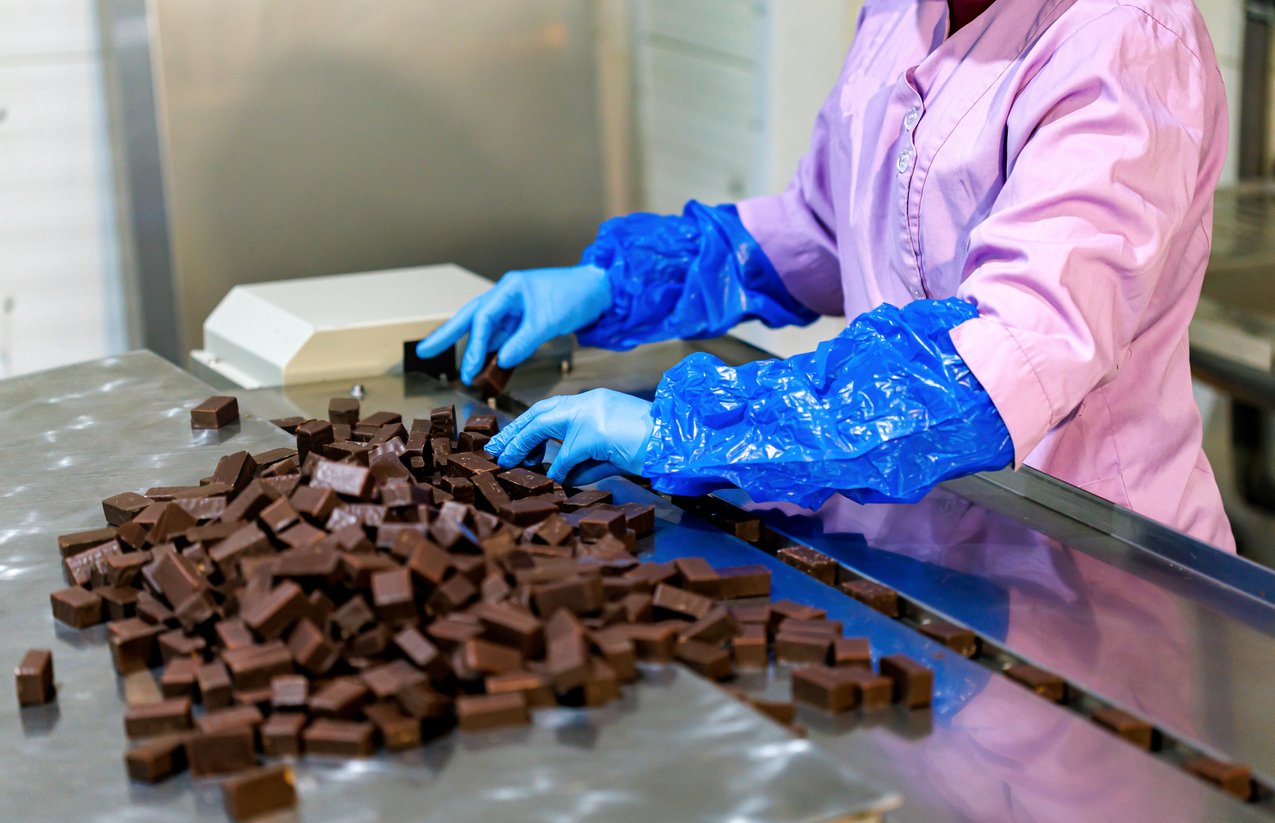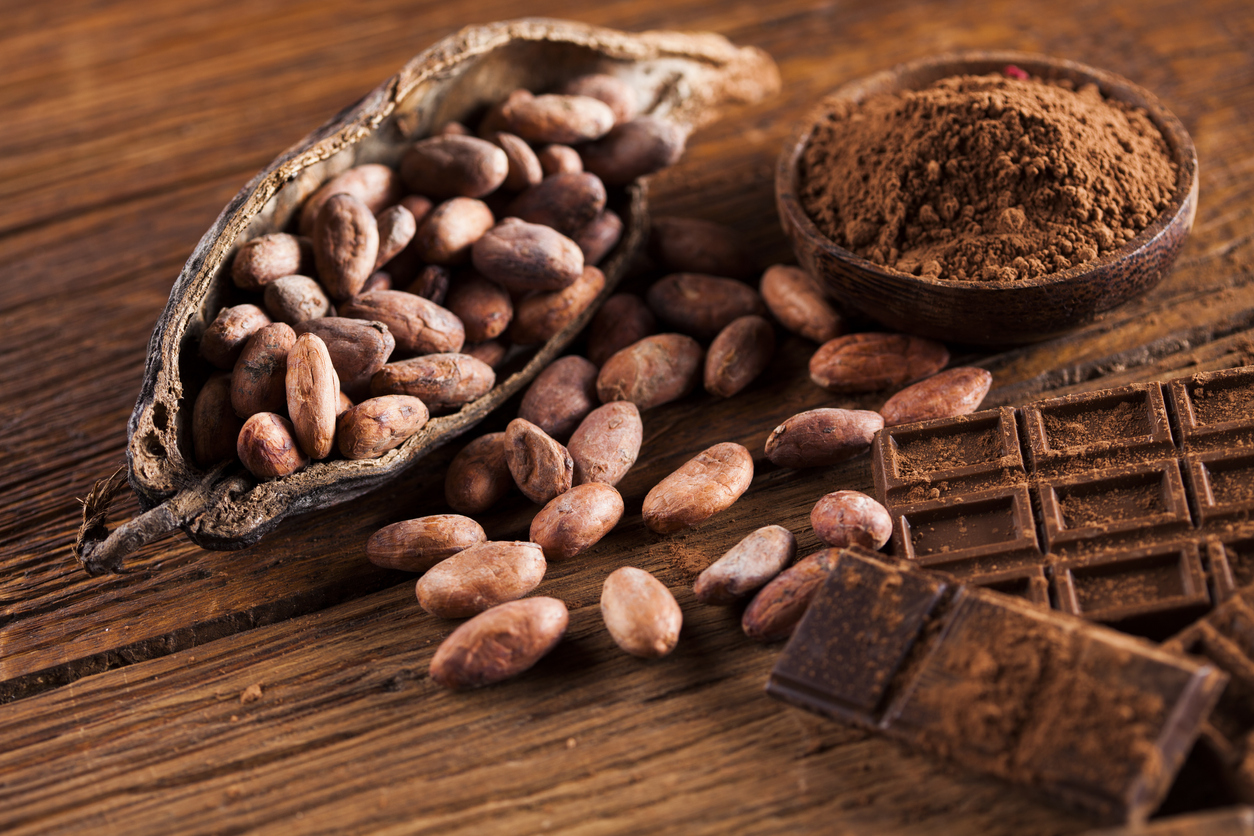I love writing upbeat articles about how eating more whole plants can benefit your health and help the environment. And I get excited to spread the word about healthy pleasures — things that taste good, feel good, and do good for our bodies and for our world.
But then there are topics like this. “Inconvenient truths” that I’d prefer didn’t exist. So here it is: Dark chocolate, one of the most beloved foods by health enthusiasts and gourmands alike, has a serious heavy metal problem.
You may, like many other people, have a special place in your heart for chocolate, in general, and dark chocolate, in particular. It’s a delightful treat. It can lift your mood. It’s rich in antioxidants and other powerful phytochemicals linked to good health. It’s like the Dolly Parton of food — the one good thing that almost everyone can agree on.
However, recent studies have unveiled a disconcerting truth: Certain dark chocolate products contain worrisome levels of two hazardous heavy metals — lead and cadmium. These metals can cause a variety of health complications in people of all ages.
And in case you were thinking, “Well, that’s too bad, but I buy only the finest quality and highest cacao, organic dark chocolates,” I’m sorry to burst your bubble. Some of the most contaminated chocolates are popular organic varieties. And the higher the cacao content, the more cadmium and lead they are likely to contain.
In this article, I’ll take an unflinching look at the latest research on heavy metals in chocolate. You’ll see why heavy metals are dangerous to your health — and find out how they get into chocolate in the first place. You’ll also see that not all chocolate brands are equally problematic. (I’ll name names and point you to original research so you can make informed choices.) And we’ll look at some of the experimental strategies agronomists and other scientists are using to reduce the amount of heavy metals in the world’s beloved chocolate supply.
The Research on Heavy Metals in Chocolate

Given all the positive press about the health benefits of dark chocolate, the news that many dark chocolate bars contain traces of heavy metals may come as a surprise. But research about this goes back a long time.
In 2005, researchers discovered that while Nigerian cocoa beans in their shells contained virtually no lead, by the time they were turned into finished cocoa products (i.e., chocolate bars and cocoa powder), they had some of the highest lead levels of any food.
And tests published by the US Food and Drug Administration (FDA) in 2018, As You Sow in 2022, and Consumer Reports in 2023 confirmed that there are concerning amounts of lead and cadmium across many of the world’s best-known brands.
Since there’s no threshold for lead and cadmium safety mandated by the US government, the researchers relied on California’s standards for how much is too much. The California maximum allowable dose levels (MADLs) are, per day, no more than 0.5 mcg (short for “microgram”) for lead and 4.1 mcg for cadmium. (Researchers who have figured out how to get their keyboards to produce non-Latin characters often refer to a mcg as a µg.)
Consumer Reports Data on Lead and Cadmium in Chocolate
Consumer Reports, the nonprofit known for its consumer ratings magazine that can help you purchase a car or a toaster, used its testing lab to measure cadmium and lead levels in some of the most recognized chocolate brands in the US. The brands tested include Trader Joe’s, Lily’s, Lindt, and Dove. Many other brands were also tested, including organic, fair trade, and Rainforest Alliance Certified chocolate, such as Equal Exchange, Beyond Good, and Alter Eco.
The Consumer Reports lab found that out of the 28 dark chocolate bars, eight had more than 100% of the MADL of cadmium in a single ounce. Ten had more than 100% of the daily allowable dose of lead per ounce. And five contained more than 100% of both cadmium and lead.
Chocolate bars with relatively safe amounts of heavy metals included:
- Mast Organic Dark Chocolate 80% Cacao
- Taza Organic Deliciously Dark Chocolate 70% Cacao
- Ghirardelli Intense Dark Chocolate 86% Cacao
- Ghirardelli Intense Dark Chocolate Twilight Delight 72% Cacao
- Valrhona Abinao Dark Chocolate 85% Cacao
As You Sow Data on Heavy Metals in Chocolate
As You Sow is an organization dedicated to helping shareholders in large public companies hold those companies accountable for aligning their environmental, social, and financial policies with their stated values. Between 2014 and 2017, the organization tested many chocolate bars, both dark and milk chocolate, for cadmium and lead.
As You Sow’s methodology differed slightly from the one used by Consumer Reports. Instead of reporting how much of the daily safe limit (California’s MADL) of the heavy metals was in a single ounce, they calculated the percentage based on the serving size suggested on the label of each product.
They also tested very recognizable brands like Hershey’s, Godiva, Endangered Species, and others, in a comprehensive study that looked at 469 different chocolate bars.
Out of those 469 chocolate bars tested, 285 had cadmium or lead above the maximum allowable dose per serving. Specifically, 191 had more than 100% of the allowable dose of cadmium, 285 had more than 100% of the allowable dose of lead, and 171 had more than 100% of the allowable dose of both cadmium and lead.
The safest chocolate options, according to As You Sow’s 2022 testing, were:
- Ojio Organic Cacao Nibs Ethically Sourced: Peru — (no lead detected, 0.2 mcg of cadmium)
- Cadbury Mini Eggs Milk Chocolate with a Crisp Sugar Shell — (0.2 mcg of lead, 0.2 mcg of cadmium)
- Dove Solid Milk Chocolate Bunny Silky Smooth — (0.1 mcg of lead, 0.4 mcg of cadmium)
- Toblerone of Switzerland Milk Chocolate with Honey and Almond Nougat — (0.1 mcg of lead, 0.4 mcg of cadmium)
- Chocolove Chilies & Cherries in Dark Chocolate 55% Cocoa — (0.2 mcg lead, 0.1 mcg cadmium)
Why Heavy Metals are Dangerous

At this point, you may be wondering if heavy metals in chocolate are a big deal. After all, not all metals are dangerous. Your body actually needs small amounts of minerals like zinc, copper, chromium, iron, and manganese in order to function properly.
And the amounts are so small. I mean, how much even is half a microgram? I looked it up, and a microgram is one-millionth of a gram. Do you know what weighs a gram? A raisin. So then half a microgram of lead — one two-millionth of a raisin’s worth — really doesn’t seem like much. But should you be concerned?
In a word, yes. First, even essential metals can be harmful in excess. And heavy metals aren’t safe for human consumption, let alone necessary, even in tiny quantities. Lead and cadmium are two of the heavy metals most commonly associated with human poisoning, the other two being mercury and arsenic.
These metals can get into our bodies in a number of ways: through industrial exposure, polluted air or water, medications, poorly made food containers, and exposure to lead-based paints. And in the case of cadmium and lead, via contaminated food.
Cadmium Health Effects
Cadmium (whose elemental abbreviation is Cd, although it has nothing to do with disks of music or with bank accounts) can be found in household waste, industrial discharges, and — here’s where it affects chocolate — soil.
The International Agency for Research on Cancer (IARC) classifies cadmium as a Group 1 carcinogen, meaning that it’s known to cause cancer in humans.
When you ingest cadmium in solid form, your body goes to work to rid itself of the toxin. First, your liver metabolizes it and then sends it to your kidneys for filtering, and then it gets forwarded to your bladder for excretion via urine. Problems occur when the amount of cadmium exceeds your kidneys’ ability to detoxify it, which can lead to kidney disease.
When cadmium is inhaled, it can cause lung cancer and emphysema.
Lead Health Effects
Lead (elemental abbreviation Pb, from the Latin “plumbum”, which actually IS related to “plumber,” on account of the fact that the early plumbers used lead pipes) can be found in our soil, drinking water (via contact with old plumbing pipes), paint in US homes built before 1978, and occupational exposure.
The IARC puts inorganic lead compounds in Group 2A, meaning they are a “probable human carcinogen.” But there are many disorders related to lead exposure that aren’t cancer.
In adults, acute symptoms of lead poisoning include gastrointestinal issues, musculoskeletal pain, fatigue, and neuropsychiatric symptoms such as irritability, fatigue, and anxiety. In some cases, lead exposure can mimic the effects of PTSD even in the absence of a traumatic event.
And as harmful as it is to adults, lead exposure in children is even worse. There’s no safe amount for children in whom exposure may cause deficits in cognitive development, behavioral problems, hearing loss, and acute encephalopathy (an umbrella term for any damage to the brain).
In children, lead exposure can also affect the kidneys and gastrointestinal system, and can even lead to anemia by interfering with vitamin D metabolism and hemoglobin synthesis.
How Do Heavy Metals Get in Chocolate?

When I first heard about this issue, I wanted to know: “Who’s putting toxic heavy metals into my dark chocolate? And how can we stop them?”
Unfortunately, it’s not a simple problem to solve. Lead and cadmium both occur naturally in the earth’s crust, and cadmium, in particular, exists in soil. Humans have made things much worse, however, through activities like mining, manufacturing, transportation, and agriculture. Modern-day levels of these metals have not only been increasing in soil but also in water and air.
As cacao trees grow, they absorb soil nutrients through their roots. And they also absorb cadmium, which accumulates in the tree as it grows. Not all cacao-producing regions are equal in soil cadmium, which explains why some of the chocolates had very little cadmium while others were much higher.
Lead, on the other hand, hardly gets into the tree’s tissues at all. Researchers have found almost no lead in the interior of cacao beans while they’re still on the tree. Instead, the lead accumulated on the outer shell.
What’s more, lead levels were low soon after beans were picked and removed from pods, but increased as beans dried in the sun for days, as lead-contaminated dust and dirt settled on the beans. During fermentation, the sticky pulp from the bean can also attract particles of lead from the environment, which are transferred to the nibs during sorting and processing and end up in the final chocolate product.
Where’s all this lead coming from? Researchers tested high-lead beans from Nigeria and discovered that the lead isotopes implicated fumes and particulates from leaded gasoline. Subsequent investigation found that the harvested beans were typically dried next to the road, to make transport easier and more efficient.
Efforts to Reduce Heavy Metal Content in Chocolate
As you were reading the previous section, some ideas may have already begun occurring to you about how to decrease cadmium and lead levels in chocolate. And agronomists and industrial engineers have also come up with some recommendations for chocolate companies to adopt.
To reduce lead contamination, manufacturers are advised to minimize soil contact with cacao beans during drying, as well as to dry them far away from roads (especially in regions where leaded gasoline is still used) and other lead-rich environments. Food scientists are also developing methods of removing some of the lead as part of the cleaning process at factories.
Cadmium is a harder problem since it originates in the soil. Chocolate companies can make a dent by conducting soil surveys to measure cadmium in various soils, and can then choose to source more beans from regions with lower levels of this element.
In some cases, cadmium-heavy soil can be treated, or even removed to make room for cleaner soil.
And since cadmium accumulates as trees age, cacao farmers are urged to replace older cacao trees with younger ones.
What Can You Do as a Chocolate Consumer?

If you’re a fan of dark chocolate, does this mean you have to wave goodbye to one of your favorite treats? Not necessarily. There are several steps you can take to minimize your exposure without abstaining.
First, it may help to balance your chocolate consumption with a varied and nutritious diet. That involves eating a lot of health-promoting foods and keeping chocolate consumption low. (After all, the chocolate bar wasn’t invented until 1847 — before that, for most people, cocoa was a condiment rather than a food in its own right.)
If you’re eating dark chocolate for its cardiovascular and mental health benefits, you’ll be pleased to know that research shows you can still reap those benefits with as little as one-third of an ounce per day. At that level, many of the offending bars no longer tip your lead and cadmium consumption over the MADL threshold.
Opting for the dark chocolate brands that contain lower levels of heavy metals, as identified by Consumer Reports and As You Sow, can also help you protect your health. And some experts recommend choosing chocolates with a lower percentage of cacao. Dark chocolate tends to be higher in heavy metals, probably because of its higher cacao content. Be aware, though, that this strategy may have the side effect of increasing the amount of sugar and fat you consume from the bar, and depending on the brand, may mean that you’re also consuming dairy.
Finally, you may want to restrict children’s consumption of chocolate, given their heightened vulnerability to heavy metals, and the long-term damage those elements can do.
You can find out more about the health benefits of chocolate and how to avoid choosing brands that rely on child slavery in our article: The Truth About Chocolate: How to Choose Healthy and Ethically Produced Cacao Products.
The Bottom Line About Lead and Cadmium in Chocolate
Recent studies reveal dangerous levels of lead and cadmium in many dark chocolate brands. These metals can present significant health risks, including potential heavy metal poisoning and severe organ damage. Cadmium contamination comes mainly from the soil in which cacao trees grow, while lead particles accumulate during drying and fermentation in lead-contaminated environments.
But while the chocolate industry grapples with this problem by altering its harvesting and manufacturing processes, there are things you can do to reduce your exposure to heavy metals in chocolate. These strategies include maintaining a diverse diet in which dark chocolate plays a small part, choosing chocolate brands with lower heavy metal levels, and limiting children’s chocolate consumption.
By staying informed and making conscious choices, you can still savor the goodness of dark chocolate from time to time, while safeguarding your — and your family’s — well-being. Together, with industry advancements and individual efforts, we can ensure a healthier and happier chocolate experience for all.
Tell us in the comments:
-
Do you eat dark chocolate on a regular basis? If so, is it for your health, pleasure, or both?
-
Did you see your favorite chocolate brands and bars on either of the lists?
-
What steps will you take to limit your exposure to heavy metals in dark chocolate?
Featured Image: iStock.com/fcafotodigital



